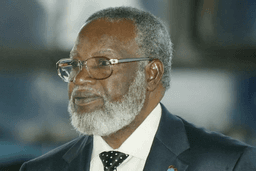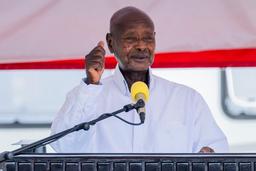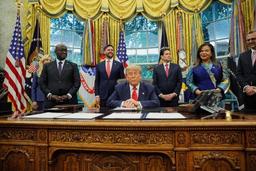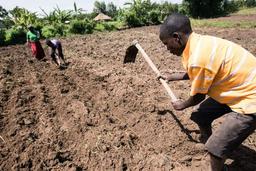Guinea
Guinea is a West African country known for its rich mineral resources especially bauxite, of which it has the world’s largest reserves. Its capital is Conakry, and it shares borders with six countries including Mali and Sierra Leone. The population is around 14 million, mostly Muslim, with French as the official language. Despite its natural wealth, Guinea faces challenges like poverty, underdeveloped infrastructure, and political instability, including a recent military coup in 2021. It plays a key role in regional water and energy systems, as several major West African rivers originate there.


14 Million

West Africa

245,857 sq km

GMT+0:00

French

Guinean Franc (GNF)

Islam,Christianity

Mamady Doumbouya
Brief
Guinea is a West African country situated along the Atlantic coast, bordered by six countries: Guinea-Bissau, Senegal, Mali, Côte d'Ivoire, Liberia, and Sierra Leone. With a land area of approximately 245,857 square kilometers, it is ecologically diverse, featuring coastal plains, highlands in the Fouta Djallon region, savannah in the northeast, and dense rainforests in the southeast. Guinea is often referred to as the “Water Tower of West Africa” because it is the source of several major rivers, including the Niger, Senegal, and Gambia.
The country has a population of over 14 million people, composed of several ethnic groups, the largest being the Fula (Peul), Mandinka (Malinké), and Soussou. The official language is French, though several indigenous languages such as Pular, Maninka, and Susu are widely spoken. Islam is the dominant religion, practiced by roughly 85% of the population, followed by Christianity and traditional African beliefs.
Guinea gained independence from France in 1958 and has since experienced political instability, including authoritarian rule, military coups, and contested elections. Its current ruler is interim president Colonel Mamady Doumbouya, who came to power in September 2021 after overthrowing President Alpha Condé in a coup. Doumbouya leads a transitional government with promises of returning to democratic governance.
Despite being one of the world’s richest countries in natural resources, particularly bauxite—the raw material for aluminum—Guinea remains economically underdeveloped. It also has deposits of gold, diamonds, iron ore, and vast hydropower potential. However, economic growth is constrained by poor infrastructure, limited access to basic services, widespread poverty, and reliance on mining exports.
The country uses the Guinean franc (GNF) as its currency and operates on Greenwich Mean Time (GMT+0). The capital, Conakry, located on the Atlantic coast, is the political, economic, and cultural center of Guinea, though it faces challenges such as rapid urbanization, congestion, and inadequate public services.
Guinea’s environmental wealth includes protected rainforests, diverse wildlife, and important water resources, but environmental degradation—especially from mining and deforestation—poses growing threats. Despite these challenges, Guinea holds strategic importance in regional energy and trade, with potential to emerge as a key economic player in West Africa if stability and development can be achieve




National Anthem
Cultural Life
Cultural milieu
Guinea's cultural milieu is rich and diverse, shaped by its many ethnic groups, including the Fula, Mandinka, and Soussou. Oral traditions, especially through griots (storytellers and musicians), play a key role in preserving history and values. Music and dance are central to daily life and ceremonies, with Guinea known for its drumming and traditional instruments like the kora and djembe. Islam heavily influences social customs, though indigenous beliefs persist, particularly in forest regions. Family, community, hospitality, and respect for elders are core social values. Despite challenges, Guinea’s culture remains vibrant, deeply rooted, and widely celebrated.
Daily life and social customs
Daily life in Guinea is centered around family, community, and tradition. People live with strong social bonds, showing deep respect for elders and warm hospitality to guests. Shared meals, communal support, and vibrant celebrations like weddings and religious holidays bring communities together. Islamic values guide daily routines, while traditional clothing and customs reflect cultural pride. Despite economic challenges, Guineans lead lives marked by resilience, generosity, and a rich sense of identity rooted in heritage and togetherness.





Cuisine
Guinean cuisine is flavorful, hearty, and deeply rooted in local traditions and ingredients. Meals are typically based on staples like rice, cassava, maize, or fonio (a native grain), often served with rich sauces made from peanuts, leafy greens, okra, or tomatoes.
A popular national dish is "riz sauce arachide"—rice with a savory peanut sauce, sometimes accompanied by meat or fish. "Riz gras" (oily rice) and "soupe kandia" (okra stew) are also widely enjoyed. Stews and sauces are usually spiced with chili peppers, garlic, ginger, and local herbs, offering bold flavors.
Protein sources include chicken, beef, goat, fish, and dried or smoked seafood, often prepared in flavorful broths. In rural areas, meals are typically shared from a communal bowl and eaten by hand, reflecting the country’s strong sense of community.
Street food is popular in towns and cities, including grilled meats, fried plantains, roasted corn, and beignets (fried dough). Fresh tropical fruits like mangoes, pineapples, papayas, and bananas are common snacks or dessert options.
Guineans also enjoy green tea, often prepared and served ceremonially in three rounds, symbolizing hospitality and social bonding. Overall, Guinean cuisine is not only nourishing but also an important expression of cultural identity and togetherness.




Music
Guinean music is vibrant, deeply traditional, and globally respected, especially for its powerful rhythms and rich storytelling. Rooted in the country’s diverse ethnic heritage, it plays a central role in daily life, ceremonies, and community events.
At the heart of Guinean music is drumming, particularly the use of the djembe and dunun drums, which originated in the Mandinka culture. These instruments are often played in groups and accompanied by dance, celebrating everything from births and weddings to harvests and spiritual rituals.
Griots, or traditional musicians and storytellers, are key cultural figures who preserve history, genealogy, and social values through song and spoken word. Instruments like the kora (a 21-string harp-lute), balafon (a wooden xylophone), and ngoni (a traditional lute) are commonly used in griot music.
Modern Guinean artists have blended traditional sounds with contemporary genres like reggae, Afrobeat, and hip-hop, creating a lively urban music scene. Guinea is also internationally known for groups like the Ballets Africains, which showcase traditional music and dance around the world.
Music in Guinea is more than entertainment—it's a living tradition that connects generations, reinforces cultural identity, and brings communities together in celebration and expression.




Guinea Reggae Music
Guinea Afrobeat Music
Hiphop Music
The arts
Guinea’s arts are a vibrant expression of its rich cultural heritage, encompassing music, dance, storytelling, visual crafts, and modern creative forms. Traditional performances, especially by renowned groups like Les Ballets Africains, celebrate community life and history. Griots preserve oral traditions, while artisans craft wood carvings, textiles, and pottery with symbolic meaning. Contemporary artists are blending tradition with modern expression, particularly in urban areas like Conakry. The arts in Guinea reflect a deep sense of identity, creativity, and cultural pride.





People
Ethnic groups
Guinea is home to a diverse range of ethnic groups, each with its own distinct language, culture, and traditions. The three largest groups are the Fula (Peul), Mandinka (Malinké), and Soussou, which together make up the majority of the population. The Fula primarily inhabit the mountainous Fouta Djallon region and are known for their rich oral traditions and strong Islamic influence. The Mandinka are mainly found in Upper Guinea and are renowned for their history of griots and musical heritage. The Soussou people live mostly in the coastal areas and around the capital, Conakry, and have a significant presence in commerce and urban life. Other smaller ethnic groups include the Kissi, Toma, and Guerze, especially in the forested southeastern regions. This ethnic diversity contributes to Guinea’s rich cultural mosaic and social complexity.





Religion
Religion in Guinea is predominantly Islamic, with about 85% of the population identifying as Muslim, mainly Sunni Muslims following the Maliki school and influenced by Sufi brotherhoods like the Qadiriyya and Tijaniyya. Christianity is practiced by roughly 8% of the population, primarily Roman Catholics and Protestants, mostly in urban areas. Traditional African religions are followed by a smaller segment, often blending with Islam or Christianity. The country is known for religious tolerance and peaceful coexistence among different faiths.

Settlement patterns
Settlement patterns in Guinea are influenced by geography, climate, and ethnic distribution. The majority of the population lives in rural areas, with villages typically located near water sources like rivers and streams to support agriculture. The coastal region and areas around the capital, Conakry, are more densely populated and urbanized, with Conakry being the largest city and economic center. In the interior, settlements tend to be smaller and more scattered, often organized along ethnic lines, reflecting the diverse groups such as the Fulani, Malinke, and Susu. The terrain, which includes mountains, forests, and savannas, also affects where people live, with some regions being less accessible and thus less densely settled. Overall, Guinea has a mix of rural villages, small towns, and a few growing urban centers.

Urban /The coastal area of Guinea
The coastal area of Guinea is a vibrant and lively region, serving as the country’s gateway to the Atlantic Ocean. It’s home to Conakry, the bustling capital city, which is the economic, cultural, and political heart of the nation. This area is characterized by its beautiful beaches, busy ports, and diverse population, all contributing to a dynamic atmosphere full of energy and opportunity. The coast benefits from its strategic location, supporting trade, fishing, and tourism, which help drive growth and development. Overall, Guinea’s coastal region is a shining example of how natural beauty and human vitality come together to create a thriving and welcoming environment.




Rural areas in Guinea
Rural Guinea is divided into four regions: Lower Guinea, Middle Guinea, Upper Guinea, and Forest Guinea, each with distinct geography, culture, and farming practices. Most people rely on subsistence agriculture, livestock, and, in some areas, mining.
These areas face major challenges, including poor infrastructure, limited healthcare, low school attendance, and inadequate water and sanitation. Despite rich cultural diversity and traditional governance, rural communities struggle with poverty, urban migration, and the effects of climate change.
Efforts by the government and NGOs are ongoing to improve education, farming, and basic services.




Demographic trends
As of January 2025, Guinea’s total population stood at approximately 14.9 million, reflecting a 2.4% year‑on‑year increase, with about 38.7% living in urban areas and 61.3% in rural areas, and a nearly even gender distribution (50.5% female, 49.5% male) The median age was 18.3 years, with age groups ranging from 14.8% aged 0–4, 21.0% aged 5–12, 11.4% aged 13–17, 13.5% aged 18–24, 15.6% aged 25–34, 9.9% aged 35–44, 6.0% aged 45–54, 4.2% aged 55–64, and 3.5% aged 65+.The total fertility rate hovered around 4.0 births per woman, life expectancy was roughly 61.1 years (62.3 for women, 59.8 for men), and infant mortality stood near 63.8 per 1,000 live births, with under‑5 mortality around 90.9 per 1,000 . Meanwhile, age‑structure data indicate that about 41% are aged 0–14, ≈55% are 15–64, and ~4% are 65+, leading to a youth dependency ratio of about 76 and total dependency of roughly 82 per 100 working‑age adults.

Touristic Cities
Conakry
Guinea’s capital on the Atlantic coast fuses lively urban life with cultural landmarks—visitors enjoy the National Museum, St. Mary’s Cathedral, and the Faisal Mosque, along with bustling markets like Madina and nearby scenic escapes such as the Bel Air beaches and the Îles de Los archipelago with its sandy shores and mangrove forests.




Îles de Los
Just off Conakry, this group of islands offers pristine beaches, forested interiors, and marine activities including snorkeling, kayaking, or lounging on white sands accessible by ferry from Conakry.
Labe
Located in the Fouta Djallon highlands, Labe impresses with its cool climate, scenic mountain views, surrounding waterfalls like Saala Falls, vibrant markets, and as a historical and cultural center of the Fulani people.
Dalaba
Often called the “Switzerland of Guinea,” Dalaba offers alpine-like atmosphere, botanical gardens, local craft markets, and proximity to some of the country’s most beautiful waterfalls




Accomodation
Guest houses
Guinea offers a variety of guesthouses catering to different preferences and budgets. In Conakry, the capital city, you can find establishments such as Chez Sophie, Hakaba, and Pension Les Palmiers, each providing unique amenities and experiences. For instance, Chez Sophie is known for its budget-friendly accommodations, while Pension Les Palmiers offers additional facilities like a restaurant and outdoor pool. In the Ratoma district, Résidences MAFCA provides apartment-style lodging with services like luggage storage and daily room service. For a more tranquil stay, Villa Ratoma offers a traditional setting with cozy guest rooms, located just a short distance from Conakry International Airport. Additionally, Hotel Mariador Palace, situated in the Quartier de Ratoma area, is a luxury hotel featuring a large terrace with a swimming pool and an international restaurant. For those interested in exploring beyond Conakry, Maf Village in Maferenya offers an eco-touristic experience with amenities like a swimming pool, jacuzzi, and activities such as hiking and cycling. Whether you're seeking a simple bed and breakfast or a more luxurious stay, Guinea's guesthouses provide a range of options to suit various travel needs




Hotels and resorts
Guinea offers a diverse range of hotels and resorts catering to various preferences, from luxurious accommodations to eco-friendly retreats. In Conakry, the capital city, you can find establishments such as Hotel Mariador Palace, Grand Hotel de L'Independance, and Hotel Palm Camayenne, each providing unique amenities and experiences. For instance, Hotel Mariador Palace is known for its beachfront location and international restaurant, while Hotel Palm Camayenne offers a blend of luxury and comfort. Additionally, Noom Hotel Conakry provides a modern setting with a fitness center and outdoor pool. For those interested in exploring beyond Conakry, Orango Parque Hotel in Guinea-Bissau offers an eco-touristic experience with amenities like a swimming pool, jacuzzi, and activities such as hiking and cycling. Whether you're seeking a simple bed and breakfast or a more luxurious stay, Guinea's hotels and resorts provide a range of options to suit various travel needs.




Campings
Camping in Guinea offers a unique opportunity to immerse oneself in the country's diverse landscapes, from lush rainforests to savannahs. While Guinea lacks a widespread network of formal campsites, there are several notable spots where travelers have camped:
- Community Campsite near Kambadaga Waterfalls: This picturesque location is not an officially designated campsite, but travelers have used it for camping. It's essential to seek permission before setting up camp and to adhere to camping etiquette, such as leaving no trace and properly disposing of waste.
- Campement Solidaire: Situated near a river with views of monkeys, approximately a 20-minute walk to a waterfall. The site offers basic facilities, including a bucket shower, natural water source, and a pit toilet. The area is under development, and some facilities may be under repair.
- Yayé's Place: A private garden setting offering tent camping with access to a bucket shower and running water toilet. A small restaurant is available where meals can be pre-ordered; breakfast is included.
When planning a camping trip in Guinea, it's crucial to be well-prepared:
- Seasonal Considerations: The best time for camping is during the dry season (November to April) when weather conditions are more favorable.
- Essential Gear: Bring necessary camping gear, including tents, cooking equipment, and sufficient water. A sturdy, waterproof tent is a must, especially during the rainy season.
- Safety and Etiquette: Always seek permission when camping on private land or near local communities. Inform local authorities or nearby residents of your camping plans for safety.




Requirements for Visa
Documents to be submitted for your application
- Valid Passport: Must be valid for at least six months beyond your intended departure date from Guinea.
- Completed Visa Application Form: Accurately filled and signed.
- Passport-Sized Photograph: Recent, color photo (2" x 2") with a white background.
- Yellow Fever Vaccination Certificate: Mandatory for entry into Guinea.
- Return Flight Itinerary: Confirmed round-trip ticket.
- Proof of Accommodation: Hotel reservation or invitation letter from a host in Guinea.
At the time of visa issuance, please provide the following documents
- Travel Itinerary: Detailed plan of your trip in Guinea.
- Proof of Sufficient Funds: Recent bank statement showing financial means to support your stay.
- Business Invitation Letter: From the inviting company in Guinea, detailing the purpose and duration of your visit.
- Employer's Support Letter: Stating the purpose of your trip and confirming financial responsibility.
Economy of Guinea
Agriculture, forestry, and fishing
Guinea's economy is largely driven by its mining sector, particularly bauxite, iron ore, and gold. In 2024, GDP growth accelerated to 5.7%, with projections reaching 6.2% in 2025 and averaging 10.1% over 2026–2027, primarily due to the anticipated commencement of Simandou iron ore operations.
Despite this growth, poverty remains high, with 52% of the population living below the international poverty line. The informal sector dominates the labor market, generating 42% of GDP and providing 96% of employment, often in low-quality jobs.
The government faces challenges in mobilizing domestic resources, with tax revenues averaging only 12.8% of GDP annually from 2016 to 2023, lower than regional targets. This constraint limits public spending on essential services such as health, education, and infrastructure.
Looking ahead, Guinea's economic outlook is positive, contingent upon implementing reforms to enhance domestic revenue mobilization and ensure that growth benefits are widely shared

Resources and power
Guinea's economy is primarily driven by its vast natural resources, notably in mining and energy sectors. The country holds approximately 25 billion metric tons of bauxite reserves, constituting nearly half of the world's total. In 2025, Guinea exported a record 99.8 million metric tons of bauxite, primarily fueled by strong Chinese demand. Chinese-controlled firms, such as Société Minière de Boké (SMB), played a significant role in this export surge. Additionally, the Simandou mountain range in southern Guinea contains the world's largest untapped high-grade iron ore deposits, estimated at 2.8 billion tons. The Guinean junta plans to develop a vast mining complex in this region, including a 650 km railway and three seaports, aiming to boost the local economy and create jobs. However, challenges such as safety, environmental concerns, and infrastructure deficits persist.
In the energy sector, Guinea's rivers, including the Niger, Senegal, and Gambia, offer substantial hydropower potential, estimated at over 6,000 MW. The country has developed several hydroelectric projects, such as the 240 MW Kaleta Dam and the 450 MW Souapiti Dam, with plans for additional projects like the 300 MW Amaria Dam. These initiatives aim to enhance domestic energy supply and position Guinea as an energy exporter in West Africa. Guinea is also investing in solar energy, exemplified by the Khoumagueli Solar Power Station, a 40 MW photovoltaic plant under development. This project represents a step toward diversifying the country's energy mix and reducing reliance on fossil fuels.
Despite these advancements, Guinea faces challenges in sustainable development. The World Bank has provided support to improve the management of mining and natural resources, focusing on environmental management and sustainable development in the mining sector. Efforts are ongoing to balance economic growth with environmental conservation and social equity.

Manufacturing
Guinea’s manufacturing industry remains underdeveloped, contributing approximately 12.75% of GDP in 2022, up slightly from around 11.7% in 2023 estimates—this is its highest level since the late 1980s . The sector is dominated by small-scale, resource-based industries, including agro-processing, light manufacturing (e.g. textiles, soap, furniture), and basic mineral processing .
Manufacturing provides only a minimal share of formal employment, estimated at 2.5%–3% in recent years .Growth is hampered by infrastructure gaps (notably unreliable energy and poor transport), limited finance, and a shortage of skilled labor
Under the current economic trajectory, the sector’s GDP share is projected to rise modestly to around 13.9% by 2030 and 14.5% by 2043 With targeted industrial policies and investment—such as in R&D, value-added processing, and downstream value chains—the sector could grow further to about 17% of GDP by 2043, significantly boosting production, employment, and poverty reduction

Finance
Guinea’s financial system is small and underdeveloped, predominately structured around the banking sector overseen by the Central Bank of the Republic of Guinea (BCRG). As of 2023–2024, the country had about 19 commercial banks, along with microfinance and e-money institutions.
Bank lending to the private sector is minimal—only about 9% of GDP in 2022, significantly below the regional norm of roughly 45%. High commercial lending rates (around 15%) and concentrated banking assets limit credit access for small businesses and households.
Major international banks—including Société Générale and other UK/French institutions—have exited, paving the way for pan‑African groups like Vista Bank Guinea and Coris Bank to expand rapidly, better serving underserved business segments.
Guinea operates primarily on a cash-based economy, but mobile money adoption is growing, supported by providers like Orange Money and local fintech startups—extending basic financial services into rural and informal markets.
To bolster financial stability, the IMF has aided the BCRG in developing a special resolution regime to manage distressed banks—aiming to enhance oversight, risk management, and crisis response capacity.

Trade
Guinea’s trade economy, centered on mineral exports like bauxite and gold, represents around 42% of GDP, with trade accounting for approximately 91% of GDP in 2023, and is experiencing robust growth driven by record bauxite shipments (nearly 100 million tons in H1 2025), strong global demand—especially from China—and the launching later in 2025 of the transformative Simandou iron ore project, expected to double mining export value, lift real GDP by 26–55% by 2030, and support long-term investment in infrastructure, poverty reduction, and sustainable development under sound revenue-management policies.

Labour and taxation
Guinea's economy is predominantly informal, with over 60% of the population residing in rural areas and relying on subsistence agriculture for their livelihoods. In 2023, approximately 59.5% of the total labor force was informally employed, with women constituting 42.1% of this informal workforce. The informal sector accounted for about 32.7% of Guinea's GDP, a decrease from 45% in the early 1980s, yet still above the average of 30.6% for lower-middle-income African countries.
Tax revenues in Guinea have been modest. In 2022, the country collected approximately $2.1 billion in tax revenue, equating to 10.8% of GDP, a slight decrease from 11.1% in 2021. The average tax-to-GDP ratio across 36 African countries was 16.0% in 2022, indicating that Guinea's tax revenue is below the continental average.
The informal economy plays a crucial role in Guinea's economic landscape, significantly contributing to both GDP and employment. However, high levels of informality pose challenges, including low revenue mobilization, higher poverty, lower per capita incomes, greater inequality, and weaker productivity investment. Despite a gradual decline in the informal sector's share of GDP, it remains a significant component of Guinea's economy.
Addressing the challenges posed by the informal economy and improving tax revenue mobilization are essential for Guinea's sustainable economic development. Efforts to formalize the labor market and enhance tax collection mechanisms could lead to increased fiscal capacity and more equitable economic growth.

Transportation and telecommunications
Guinea's economy is characterized by its reliance on agriculture and mining, with a significant portion of the population engaged in informal economic activities. In 2023, the country's GDP grew by an estimated 5.7%, driven by a strong performance in the mining sector, particularly bauxite production, and a 10% increase in gold exports.
Despite this growth, Guinea faces challenges in translating economic gains into widespread employment opportunities. The informal sector remains a substantial part of the economy, accounting for approximately 32.7% of GDP and employing about 96% of the labor force, often in precarious conditions.
The country's fiscal policy is marked by low expenditure levels relative to peers, with tax revenues averaging only 12.8% of GDP annually from 2016 to 2023, below the 15% minimum threshold deemed necessary for long-term growth.
Guinea's infrastructure, particularly in transportation and telecommunications, faces significant deficits. Only 8% of roads were paved in 2023, and rural areas are most affected, with only 17% of the rural population having access to all-season roads within two kilometers.
The government has recognized the need for reforms to enhance domestic resource mobilization and improve infrastructure to support inclusive and sustainable development. The commencement of the Simandou iron ore project is expected to boost GDP growth but may also exacerbate existing inclusive-growth challenges unless appropriate macro-fiscal measures and key sector reforms are implemented.

Latest News in Guinea
Politics
The first president of independent Namibia, Sam Nujoma, has died at the age of 95 in the capital Windhoek, the country's current leader has announced.
Politics
Ugandan President Yoweri Museveni has officially announced his intention to seek re-election in the 2026 presidential race, extending his nearly four-decade rule. Museveni, who has been in power since 1986, is once again positioning himself as the steady hand guiding Uganda through challenges. His decision has sparked mixed reactions, with supporters praising his leadership and longevity, while critics call for fresh leadership and political reform. As the nation looks ahead to the 2026 elections, Uganda braces for a heated political contest.
Politics
Peace Agreement with DRC Rwanda and the Democratic Republic of Congo (DRC) signed a U.S.-brokered peace deal aimed at ending conflict and promoting regional trade. Rwanda agreed to stop supporting armed groups like M23 rebels, though it denies involvement. Tensions remain, and President Kagame is cautious about whether the peace will last.
Wildlife
Tanzania has announced that all foreign tourists visiting Mainland Tanzania will be required to purchase a mandatory travel insurance policy upon arrival, beginning January 2026. The new regulation, issued by the Ministry of Finance on July 4, 2025, is part of the government reforms in the country’s 2025/26 financial year agenda. According to the notice, the measure will apply to all non-citizens, with the exception of visitors from countries that are part of the East African Community (EAC) and the Southern African Development Community (SADC). Citizens from these regions will continue to be exempt from the requirement.
Environment
In light of the growing food insecurity crisis across many African nations, heads of state and agriculture experts gathered in Nairobi, Kenya, this week to discuss solutions to address food shortages, especially in regions severely affected by climate change, political instability, and economic challenges. The two-day summit, titled “Agriculture and Climate Resilience: A Pan-African Strategy”, brought together government officials, NGOs, scientists, and international organizations to create a comprehensive strategy to improve agriculture, nutrition, and sustainable food systems across the continent.
Tech & Science
In 2025, Artificial Intelligence (AI) isn’t just a futuristic buzzword - it’s the secret weapon behind some of the world’s most successful content creators. From bloggers and YouTubers to podcasters and marketers, AI-powered tools are changing the way we brainstorm, write, design, and edit. If you've ever struggled with writer’s block, lacked design skills, or wished for faster content creation - AI might be your best assistant yet. Here’s how AI is revolutionizing the creative industry and how you can use it to boost your projects.





